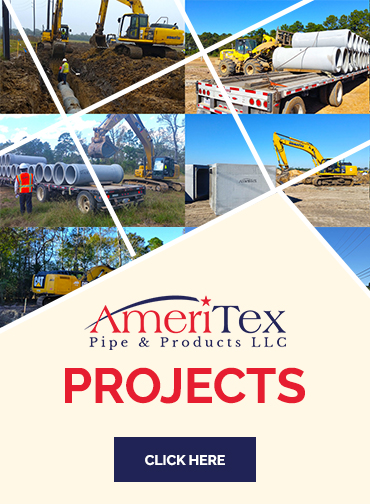How To: Laying Concrete Drainage Pipes
Posted on May 24, 2022
Laying concrete drainage pipes is an important part of any drainage system. They help to move water away from your property and prevent flooding. You need to consider several things when installing concrete drainage pipes, including the handling of the pipe, excavation, and installation. In this blog post, we will discuss some tips on how to lay concrete drainage pipes.
Handling of RCP Material
Reinforced concrete pipe (RCP) is a type of pipe that consists of a concrete core with one or more layers of reinforcement. The reinforcement can be made from various materials, including steel, fiberglass, and Kevlar. RCP is typically used for sewer and stormwater applications, but it can also be used for other piping systems.
There are several methods for handling RCP material, including:
- Lifting the pipe by hand using a lifting strap or similar device
- Lifting the pipe with a crane or other heavy equipment
- Loading the pipe onto a flatbed trailer or other vehicle for transport
Excavation for Reinforced Concrete Pipe
Excavation for reinforced concrete pipe (RCP) is a construction technique used to create a circular hole in the ground that is big enough and deep enough to install concrete pipe. The first step in excavation for RCP is to mark the proposed excavation area with flags or another marker so that the excavator operator knows where to dig.
Once the area is marked, the operator will use a large excavator to dig a hole that is approximately 2 feet wider than the diameter of the pipe. It must also be ensured that the trench has the appropriate grade and that the bottom of the trench is flat.
Preparation of Joints for Reinforced Concrete Pipes
Joints are an essential part of reinforced concrete pipes. They provide flexibility to the pipe and allow for movement due to thermal expansion or contraction, ground settlement, or seismic activity. Joints also allow for the easy installation of RCP by permitting the sections to be connected in the field. Three joints are commonly used when installing concrete pipes — butt, tongue and groove, and lap.
Installation of Reinforced Concrete Pipes
When laying concrete drainage pipes, it is important to consider several factors, such as the depth and width of the trench, soil conditions, and the type of equipment being used. The following steps can help ensure a successful installation:
- Install any necessary drainage components such as perforated pipe and catch basins before placing the RCP. This step will help prevent water from pooling around the pipe and causing soil erosion.
- Place the RCP into the trench, ensuring it is level and aligned properly. It is vital to have at least 2 feet of pipe above ground level to properly connect to the storm drain system.
- Fill the trench around the pipe with compacted gravel or crushed stone up to the level of the pipe invert (the lowest point inside the pipe). This will help support the pipe and prevent it from shifting.
- Connect the RCP to the storm drain system according to local code requirements. This usually involves attaching a flared fitting to the end of the pipe and connecting it to a catch basin or manhole.
Backfilling for RCP
Backfilling is the process of filling in a trench or hole that has been dug for RCP and is an important part of the pipe culvert installation procedure. Depending on the application, the backfill material can be either soil or concrete.
The backfilling process is essential because it helps support the weight of the pipe and keeps it from moving around. It also helps prevent soil erosion and keeps the pipe from becoming damaged by water or other elements.
The backfill material must be compacted properly to achieve the desired results. This is typically done with a heavy-duty roller or tamper. The goal is to achieve a high enough density to support the pipe but not so high that it causes damage to the pipe.
Laying concrete drainage pipes can be intimidating. However, following the proper steps and using the correct materials can make laying concrete drainage pipes a relatively easy process. AmeriTex Pipe & Products is here to help you every step of the way.
Contact us today for more information on our products and services. We would be happy to answer any questions you may have about installing concrete drainage pipes.


